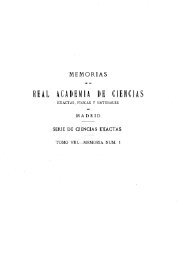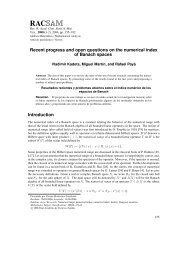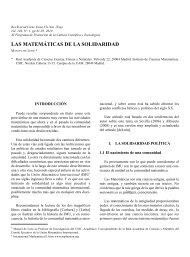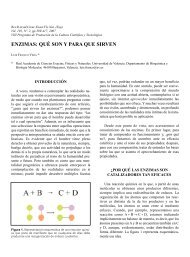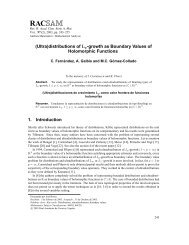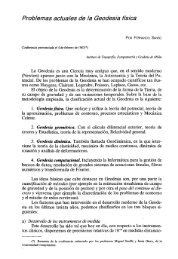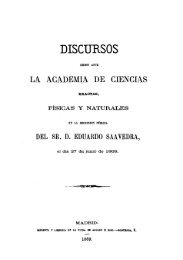The water footprint and virtual water exports of Spanish tomatoes
The water footprint and virtual water exports of Spanish tomatoes
The water footprint and virtual water exports of Spanish tomatoes
- No tags were found...
Create successful ePaper yourself
Turn your PDF publications into a flip-book with our unique Google optimized e-Paper software.
34 THE WATER FOOTPRINT OF TOMATO PRODUCTIONthe European Union, being the UK, Germany <strong>and</strong> the Netherl<strong>and</strong>sthe main importers (MITYC, 2009). As an average, 93%<strong>of</strong> the <strong>virtual</strong> <strong>water</strong> <strong>exports</strong> correspond to the EU.<strong>The</strong> average <strong>water</strong> apparent productivity <strong>of</strong> the exportedproduction in the period was 8.8 €/m 3 . This productivity ishigher than the average WAP <strong>of</strong> 5 €/m 3 , <strong>and</strong> closer to 7.1€/m 3 <strong>of</strong> greenhouse production <strong>and</strong> to 7.2 €/m 3 correspondingto production using ground<strong>water</strong>. <strong>The</strong>se results are actuallyclosely related, since the main exporting provinces, Almería,Murcia <strong>and</strong> Las Palmas, have a production mainly undergreenhouses conditions, using ground<strong>water</strong> <strong>and</strong> in early <strong>and</strong>late season (MARM, 2010b; Suárez, 2002 García, 2009). Togetherthey represent more than 60% <strong>of</strong> the annual <strong>exports</strong>(MICYT, 2009).5. DISCUSSIONThis study provides a detailed analysis <strong>of</strong> the green, blue<strong>and</strong> grey <strong>water</strong> <strong>footprint</strong> <strong>of</strong> tomato production in Spain, bothin l/kg <strong>and</strong> hm 3 , for all the <strong>Spanish</strong> provinces during theperiod 1997-2008.<strong>The</strong> results obtained for the average green <strong>and</strong> blue <strong>water</strong><strong>footprint</strong> in terms <strong>of</strong> l/kg were in the range <strong>of</strong> those fromother studies, whereas the values obtained for the averagegrey <strong>water</strong> <strong>footprint</strong> were much higher. For tomato productionin Spain, Chapagain <strong>and</strong> Orr (2009) obtained values <strong>of</strong>about 14, 60 <strong>and</strong> 7 l/kg for the green, blue <strong>and</strong> grey <strong>water</strong><strong>footprint</strong> respectively. In their study <strong>of</strong> the <strong>water</strong> <strong>footprint</strong><strong>of</strong> tomato production in Italy, Aldaya et al. (2010) calculatedvalues <strong>of</strong> 35, 60 <strong>and</strong> 19 l/kg for green, blue <strong>and</strong> grey <strong>water</strong><strong>footprint</strong> respectively. <strong>The</strong>se differences with the study <strong>of</strong>Chapagain <strong>and</strong> Orr may be related to the different datasources <strong>and</strong> assumptions made. We followed the Nitrogen



